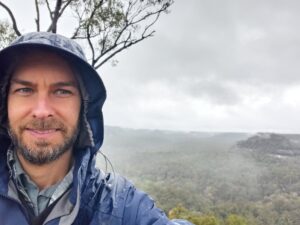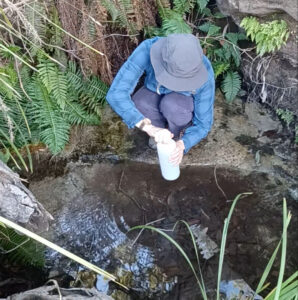Griffith University researchers are taking a novel multi-disciplinary approach to understanding and protecting high-value water sources in central Queensland’s Great Artesian Basin.
This research program will reveal new knowledge about Great Artesian Springs ranging from cultural values and uses to a better understanding of biogeochemical processes, water flows and recharge for the benefit of a wide range of stakeholders, including local First Nations peoples, conservation groups, landholders and government agencies.

“We’re looking at the processes and value of Queensland’s Great Artesian Springs, specifically the Wardingarri Springs, in some extremely diverse ways, as can be seen in the projects of two current PhD students, Mr Clint Hansen and Ms Monica Esmond,” said lead researcher Professor Matt Currell of the Australian Rivers Institute and School of Engineering and Built Environment.
“Mr Hansen, an Iman Traditional Owner, is conducting both qualitative and quantitative research focusing on First Nations water rights, uses and values of the region.”
This research is helping to document the cultural values supported by the springs and other waters of the Wardingarri (Upper Dawson) catchment, in the context of ongoing extraction of coal seam gas and water from the underlying Surat and Bowen basins.
“As a local Traditional Owner, Clint brings unique and invaluable skills and knowledge to his research, into the ground and surface water systems flowing through Iman Country,” Professor Currell said.
“His positionality and mutual respect within his community ensure that his research is highly impactful and will benefit the Iman People and their Country for years to come.”
The research Ms Esmond is conducting on the other hand is using isotope chemistry to ‘fingerprint’ different waters and to better understand the source aquifers for different springs in the region, the timescales of groundwater recharge and flow to springs, and the biogeochemical processes and dependencies of spring ecosystems.
“Monica is using a suite of environmental isotopes sampled in the springs, surface water and groundwater of the region, and combining this with analysis of environmental DNA as a way of pioneering a new approach to identifying the contributions of water from different springs into surface water,” Professor Currell said.

“She is primarily focusing on the catchments of the Wardingarri and Carnarvon Creek – a region of outstanding cultural and ecological significance, which to date, has had limited hydrogeological research conducted.
“The combination of environmental isotopes and eDNA promises to give unique and important insights on the waters of this vitally important region, and their vulnerability to climate change and resource extraction.”
Early findings from the research and a letter to the Commonwealth Minister for Water and the Environment from the research team, traditional owners and conservationists, has helped inform decision-making regarding oil and gas industry plans to discharge wastewater to the Wardingarri system.
Overall, this multi-disciplinary research program is providing enhanced knowledge for the long-term protection of nationally and globally important springs and the communities they support.








